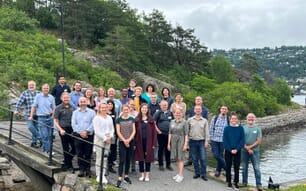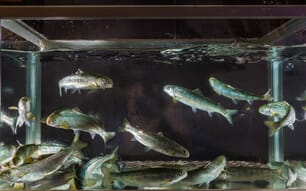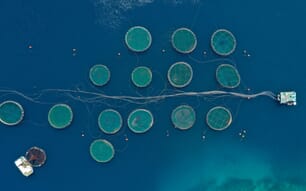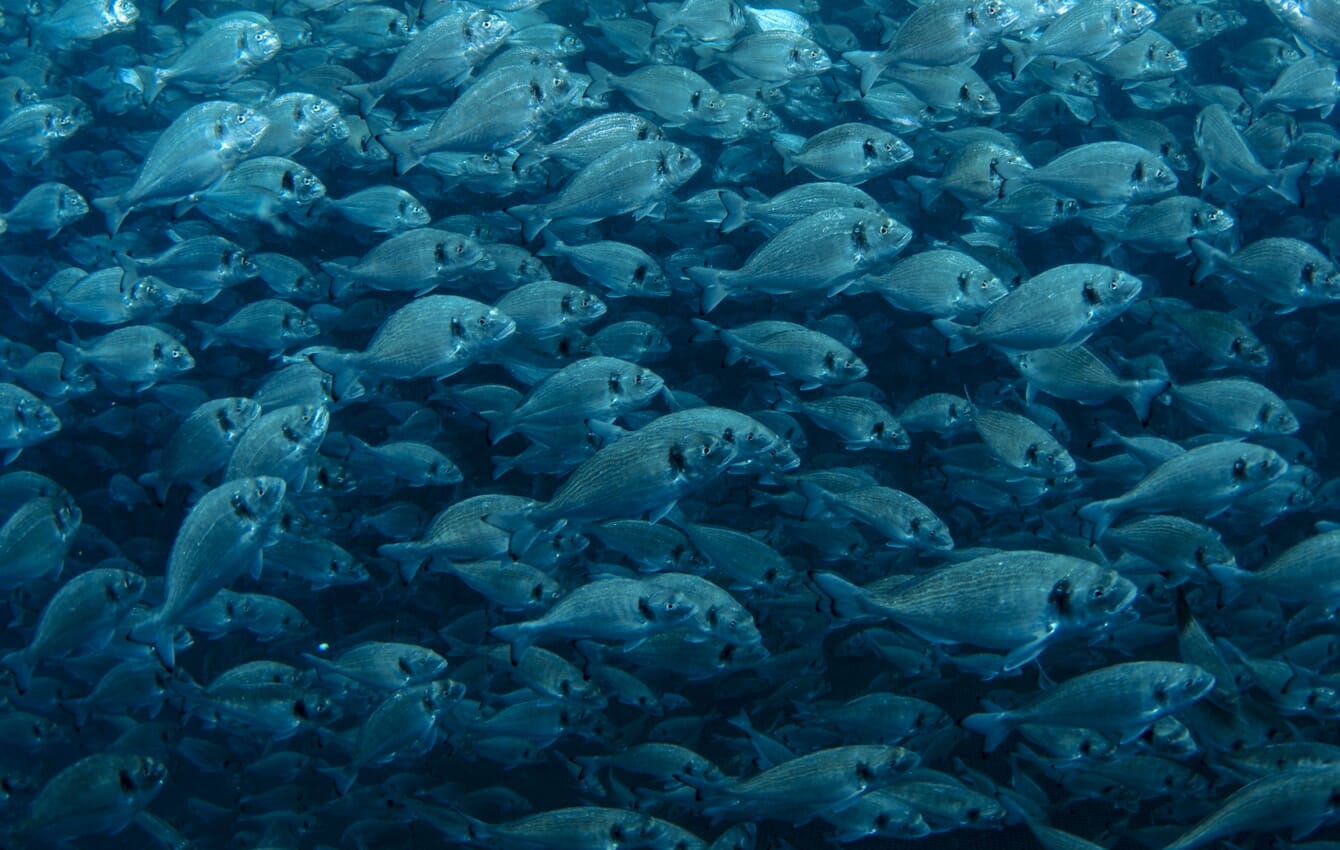
It is now unthinkable to culture Atlantic salmon without an advanced selective breeding programme. The sea bass and sea bream sectors have been slower to adopt these, but genetics research in the H2020-funded MedAID project has helped to improve the breeding of these two main aquaculture species in the Mediterranean.
Selective breeding is a long-term process, where the aim is to improve desirable traits, such as production efficiency, disease-resistance and product quality.
The potential of selective breeding is significant. Average genetic gains for growth-related traits is 12 percent per generation in all species, and genetic gains for growth are valued at €0.2 per kilo of fish for both gilthead seabream and Atlantic salmon. MedAID has contributed with tools, methods and knowledge of biology and genetics to improve European seabass and gilthead seabream production.
Selective breeding status of gilthead seabream and European seabass
The first commercial breeding programmes for seabream were initiated in the early 2000s. Since then, the sector has consolidated, and the breeding programmes have developed accordingly. In 2016, it was estimated that approximately 50 percent of farmed European seabass came from selective breeding programmes.
Compared to the Atlantic salmon industry, which harvests much larger volumes of fish than both gilthead seabream and European seabass, there is a relatively high number of breeding programmes for these Mediterranean species. However, such programmes are often integrated in juvenile production facilities, rather than taking place in specialised selective breeding units. The complexity of the breeding goals differ, but some build on disease-resistance traits in addition to the more commonly used productivity traits, like growth rate.
Below are some of the technical findings made by the genetics researchers involved in MedAID. Together they provide an opportunity to conduct more advanced selective breeding in European seabass and gilthead seabream.
1. A new genomic resource has been developed
High-throughput genotyping arrays are essential tools for genetic studies. Genetic markers representative of the whole genome are put on an array and can provide information at an individual level in a very efficient way.
MedAID has, in co-operation with the Performfish project, developed a combined genotyping array called MedFish for bass and bream. It contains ~30,000 genetic markers per species.
This information can, for example, be used to estimate genomic breeding values, map genes, estimate (genomic) parameters – including the effective population size (a parameter inversely related to the loss of genetic variability) – and understand the genetic structure of populations.
2. Lipids for fish and human health and production efficiency
We have worked with lipid-related production traits in MedAID. Excessive fat is linked to poorer production efficiency in all animal production. In salmon smolts, we have shown that feed conversion ratio (kg feed / kg fillet) was improved by roughly 4 percent when reducing body fat content by 1 percent-unit, which reduces feed costs correspondingly at the farmer’s level. It is also known that excessive lipid deposition in the body and internal organs increases the risk of metabolic disorders, oxidative stress and inflammation. Hence, studies on compartmentalisation of lipids into different organs can give information on the health status of the fish.
The main parameter for the potential of a trait to be improved by selective breeding is its heritability. In MedAID, we have shown that heritability of muscle fat content is medium-high in both European seabass (0.59) and gilthead seabream (0.34), which means that 59 and 34 percent of the variation in muscle fat can be explained by genetics and not by environmental influence. Low genetic correlations of muscle fat with body weight in both species indicated that genetic variation in muscle fat content is largely independent of growth. In European seabass, we have also shown that the total fat content of the liver, which is the main organ for metabolism and transport of lipids, and fillet are to a large degree independent traits. This suggests that these two lipid deposits are regulated independently. In gilthead seabream, we found indications that there is a strong genetic component for the rate of lipid synthesis in muscle. This is not seen in Atlantic salmon.
However, not only the total fat content but also the content of the individual fatty acids are studied in fish, in particular the long-chained marine omega-3 fatty acids EPA and DHA, because of their beneficial health effects in fish and humans. Our results showed that both the species had high levels of these fatty acids, and that selective breeding is a promising tool for increasing their content in fillets of gilthead seabream and European seabass, with heritability for percent DHA of 0.33 and 0.51, respectively. In seabass, using genomic markers, we identified candidate genes for omega-3 traits.
3. Major traits depend on the interaction between genes and environment
Genotype-by-environment (GxE) interaction is the phenomenon that occurs when different genotypes perform differently in different environments. If it exists for a species then selection strategies need to be adapted or separate environment-specific breeding programmes need to be developed. Results from MedAID on seabream show that harvest weight, growth rate and fillet weight all showed strong GxE interactions between the East (Greece) and West Mediterranean (Spain). Genetic improvement programmes for harvest weight, fillet weight and growth rate need to take into account which production environment is targeted. The strongest environmental effect in this study was the differences in sea temperature (identical feed was used), which indicates the need to breed fish with an improved ability to deal with rapidly changing environmental conditions, for example caused by climate change.
4. Genetic stratification of wild and farmed populations
Results from a population genetics study showed more stratification of the seabass populations than of the seabream populations. The MedFish array can distinguish wild from farmed populations and determine the genetic diversity that exists within populations. There is a clear differentiation between wild and farmed populations in both species, and this indicates that care must be taken to avoid escapes that could have undesirable genetic effects in native populations. Several farmed populations had low effective population sizes, which shows the need of applying selection and mating approaches designed to control inbreeding and loss of genetic variability in order to ensure the sustainability of the breeding programmes.
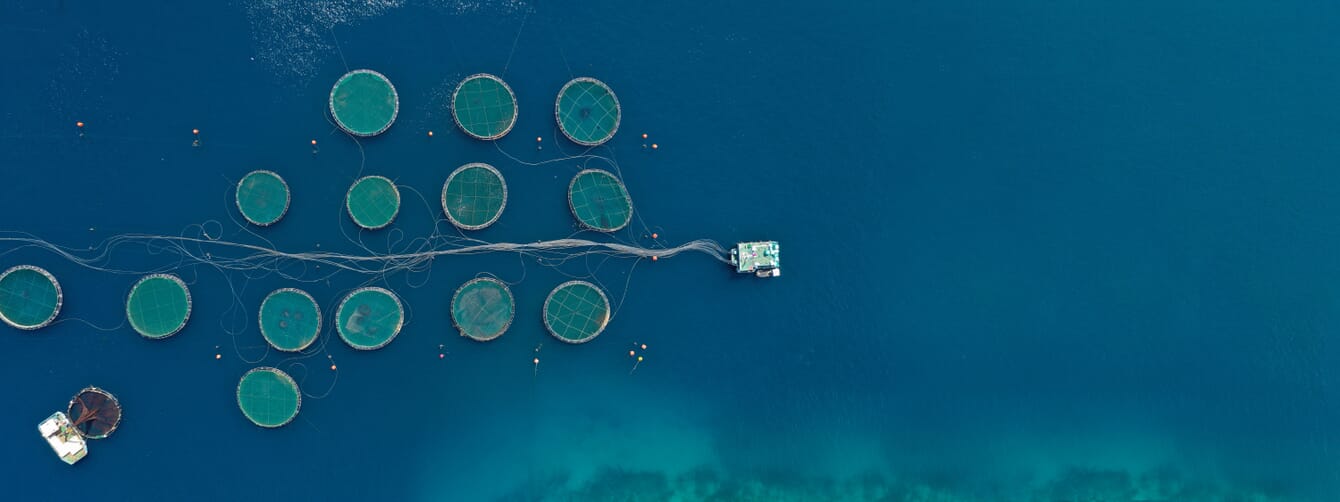
The history behind the project
The MedAID project's roots were in the European Aquaculture Society (EAS) meeting in San Sebastian, in 2014, where EAS and EATIP organisied a session to pinpoint areas of the culture of these species that were underutilised and could be improved. They included fish health, fish nutrition but also genetics. Comparisons to the Atlantic salmon industry were made.
The report from this session was an important background document for the European Commission to set up a call of the H2020 framework programme on Mediterranean aquaculture with a holistic and integrated approach, with both social science and technical activities.
The two sister projects MedAID (www.medaid-h2020.eu) and PerformFISH (www.performfish.eu) were born. MedAID was led by CIHEAM (Spain). The genetics work of MedAID was led by Nofima (Norway). University of Edinburgh - Roslin Institute (UK), INIA (Spain), Wageningen University (the Netherlands) and University Ege (Turkey) were reserarch partners. The main R&D activities were done in collaboration with the industry partners ABSA-Culmarex (Spain) and Galaxidi Marine Farm (Greece). In addition, anonymous farmers throughout the Mediterranean sent fish samples for analysis.
It has been a very good example of collaboration between research and industry partners, with the aim of improving the European aquaculture sector through genetics and selective breeding.

